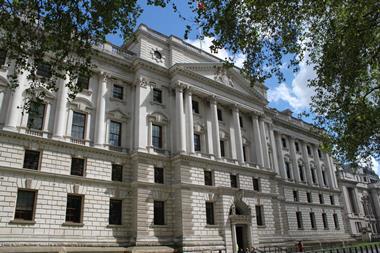The UK government has confirmed that its next green Gilt will be much longer-dated than the first, which should make it more appealing to the country’s liability-driven investors.
Indeed, the inaugural green bond issuance, despite being welcomed, was never going to be an automatic buy for the country’s pension funds just because of its status, and so it seems, with some plausible buyers sticking to the sidelines.
BT Pension Scheme (BTPS) and Universities Superannuation Scheme (USS), two of the UK’s largest pension funds, did not back the debut deal. The €10bn 12-year issue fared none the worse – it drew some €100bn in demand from mostly domestic buyers, the largest orderbook for a sovereign green bond.
A spokesperson for the BTPS, a £57.5bn (€67.5bn) defined benefit scheme, said the pension fund welcomed the introduction of green Gilts and was interested in participating in the inaugural issue, but added: “We have a duty to our members to ensure value and as this issue was oversubscribed, we weren’t prepared to pay over what we believe the Gilt’s fair value to be and therefore decided not to participate on this occasion.”
The bond, which features a 0.875% coupon, was priced at 7.5bps over the 2032 conventional Gilt, after the syndicate banks first marketed the deal with published price guidance of 7.5bps-8.5bps.
At USS, Ben Clissold, head of fixed income and treasury for the scheme’s in-house manager, said it did not participate in the inaugural green Gilt because “as a long-term investor with pension liabilities that stretch out over decades, our preference would be for longer maturity dates”.
Rob Gall, head of market strategy at Insight Investment, told IPE a transaction in the 20- to 30-year maturity range was “likely to be much more in the meat of where most LDI portfolios are structured”.
The Debt Management Office recently announced that its second green Gilt would be launched in the week of 18 October, with a maturity date of July 2053.
Insight took part in the inaugural green Gilt transaction, judging it to have been priced at a premium versus a conventional Gilt but anticipating that this would grow.
“It’s something I think clients would be keen to have in their portfolios both from a performance perspective and clearly pension schemes are also focussing more on ESG issues,” said Gall.
River and Mercantile, another UK investment manager, also participated in the inaugural UK government green bond. It said it was able to do so by swapping out of non-green Gilts of a similar maturity and that it only considered a switch under circumstances when the price difference was attractive enough but any reduction in yield versus a conventional bond was small enough that the impact of the yield difference would be minimal at a total portfolio level.
Defined contribution master trust NEST is prioritising investing into long-term growth assets, but a spokesperson told IPE it was pleased by the response from investors to the inaugural deal and would consider future opportunities.
“Our net zero ambition covers NEST’s entire portfolio so we’re exploring ways to reduce our carbon footprint across all our asset classes,” he said. “Green bonds could play an important role in our fixed income investments.”
The stance of these investors contrasts with that of Dutch Triodos Investment Management, which said it would not invest in the green Gilt because the funding could be used to finance blue hydrogen and because of concerns about the carbon capture and storage projects that will be financed.





















No comments yet